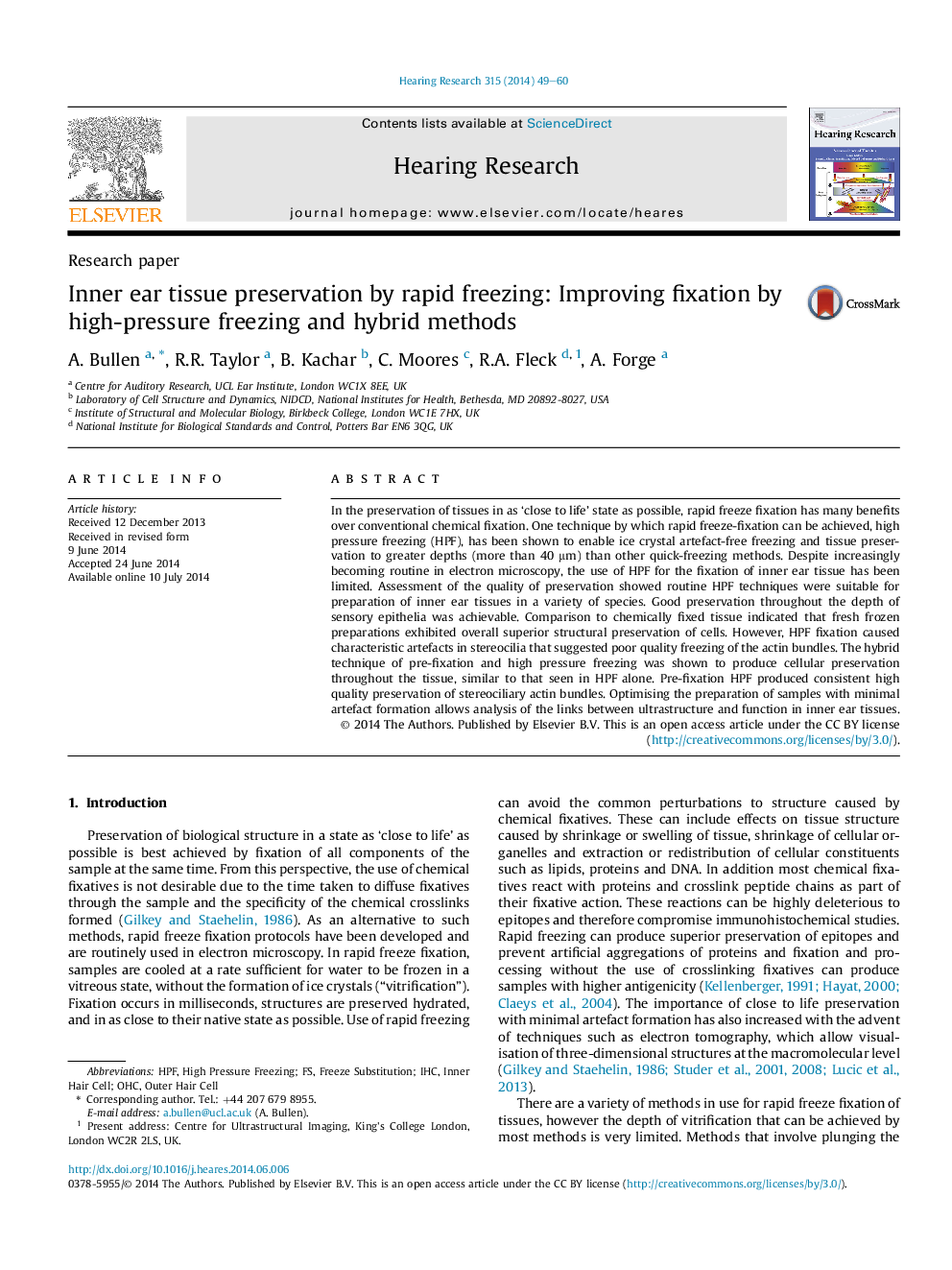| Article ID | Journal | Published Year | Pages | File Type |
|---|---|---|---|---|
| 6287364 | Hearing Research | 2014 | 12 Pages |
Abstract
In the preservation of tissues in as 'close to life' state as possible, rapid freeze fixation has many benefits over conventional chemical fixation. One technique by which rapid freeze-fixation can be achieved, high pressure freezing (HPF), has been shown to enable ice crystal artefact-free freezing and tissue preservation to greater depths (more than 40 μm) than other quick-freezing methods. Despite increasingly becoming routine in electron microscopy, the use of HPF for the fixation of inner ear tissue has been limited. Assessment of the quality of preservation showed routine HPF techniques were suitable for preparation of inner ear tissues in a variety of species. Good preservation throughout the depth of sensory epithelia was achievable. Comparison to chemically fixed tissue indicated that fresh frozen preparations exhibited overall superior structural preservation of cells. However, HPF fixation caused characteristic artefacts in stereocilia that suggested poor quality freezing of the actin bundles. The hybrid technique of pre-fixation and high pressure freezing was shown to produce cellular preservation throughout the tissue, similar to that seen in HPF alone. Pre-fixation HPF produced consistent high quality preservation of stereociliary actin bundles. Optimising the preparation of samples with minimal artefact formation allows analysis of the links between ultrastructure and function in inner ear tissues.
Related Topics
Life Sciences
Neuroscience
Sensory Systems
Authors
A. Bullen, R.R. Taylor, B. Kachar, C. Moores, R.A. Fleck, A. Forge,
